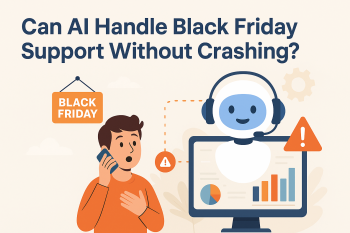Introduction
In 2024, e-commerce websites must do more than just sell products. They must provide a seamless, engaging, and secure shopping experience to thrive in a competitive market. But what features set successful e-commerce websites apart?
This article outlines the top features your e-commerce website needs to succeed in 2024 and stay ahead of the curve.
Essential Features for E-commerce Success
1. Mobile-Friendly Design
Mobile commerce accounts for over 70% of online sales. A responsive, mobile-friendly design ensures your website looks and performs well on all devices.
Key elements include:
• Fast Loading Speed: Users expect pages to load in under 3 seconds.
• Touch-Friendly Navigation: Buttons and menus should be easy to use on smaller screens.
• Streamlined Checkout: A mobile-optimized checkout reduces cart abandonment.
2. User-Friendly Navigation
A confusing website drives customers away. Simple, intuitive navigation ensures visitors can easily find what they’re looking for.
Features to focus on:
• Search Bar: Include predictive search suggestions.
• Categorized Menus: Group products logically.
• Breadcrumbs: Help users track their journey.
3. High-Quality Product Images and Videos
Visuals are crucial in online shopping. High-resolution images and videos:
• Showcase products from multiple angles.
• Provide a 360-degree view or zoom functionality.
• Build trust and boost conversions.
Videos demonstrating product use or benefits are especially effective.
4. Personalization Features
Personalization boosts customer satisfaction. Tailor the experience with features like:
• Product Recommendations: Based on browsing and purchase history.
• Personalized Discounts: Incentives based on user behavior.
• Dynamic Content: Homepage changes depending on user preferences.
5. Secure Payment Gateways
Security is a top concern for online shoppers. Offer multiple, secure payment options, such as:
• Credit/Debit Cards
• Digital Wallets (Google Pay, Apple Pay)
• Buy Now, Pay Later (BNPL)
Ensure your website is SSL-certified to protect user data.
Essential Features for E-commerce Success
1. Mobile-Friendly Design
Mobile commerce accounts for over 70% of online sales. A responsive, mobile-friendly design ensures your website looks and performs well on all devices.
Key elements include:
• Fast Loading Speed: Users expect pages to load in under 3 seconds.
• Touch-Friendly Navigation: Buttons and menus should be easy to use on smaller screens.
• Streamlined Checkout: A mobile-optimized checkout reduces cart abandonment.
2. User-Friendly Navigation
A confusing website drives customers away. Simple, intuitive navigation ensures visitors can easily find what they’re looking for.
Features to focus on:
• Search Bar: Include predictive search suggestions.
• Categorized Menus: Group products logically.
• Breadcrumbs: Help users track their journey.
3. High-Quality Product Images and Videos
Visuals are crucial in online shopping. High-resolution images and videos:
• Showcase products from multiple angles.
• Provide a 360-degree view or zoom functionality.
• Build trust and boost conversions.
Videos demonstrating product use or benefits are especially effective.
4. Personalization Features
Personalization boosts customer satisfaction. Tailor the experience with features like:
• Product Recommendations: Based on browsing and purchase history.
• Personalized Discounts: Incentives based on user behavior.
• Dynamic Content: Homepage changes depending on user preferences.
5. Secure Payment Gateways
Security is a top concern for online shoppers. Offer multiple, secure payment options, such as:
• Credit/Debit Cards
• Digital Wallets (Google Pay, Apple Pay)
• Buy Now, Pay Later (BNPL)
Ensure your website is SSL-certified to protect user data.
Advanced Features to Stay Ahead
1. AI-Powered Chatbots
Chatbots provide instant customer support, improving user experience. They can:
• Answer FAQs.
• Assist with product recommendations.
• Guide users through checkout.
2. Augmented Reality (AR)
AR is a game-changer for e-commerce. It allows customers to:
• Try products virtually, such as clothes or furniture.
• Visualize how items fit into their lives.
3. Social Media Integration
Social commerce is booming. Integrating social media into your website lets users:
• Share products with friends.
• Use shoppable links to buy directly from posts.
• Log in through social accounts for convenience.
4. Loyalty Programs
Reward loyal customers with points, discounts, or exclusive offers. A well-designed loyalty program encourages repeat purchases and builds long-term relationships.
5. Multi-Language and Multi-Currency Support
Expanding globally? Ensure your website caters to international audiences by:
• Offering multiple language options.
• Displaying prices in local currencies.
• Simplifying international shipping processes.
Why These Features Matter in 2024
1. Increased Competition
With e-commerce booming, standing out is crucial. These features help create a unique and memorable experience.
2. Changing Consumer Expectations
Today’s shoppers demand convenience, speed, and security. Meeting these expectations builds trust and loyalty.
3. Technological Advancements
Incorporating cutting-edge technology keeps your website relevant and competitive.
Conclusion
Building a successful e-commerce website in 2024 requires more than just an online storefront. By incorporating essential and advanced features, you can create an engaging, secure, and seamless shopping experience.
Stay ahead of the curve by investing in technologies like AI, AR, and mobile optimization. After all, the future of e-commerce lies in innovation and customer-centric design.
Frequently asked questions
1. Why is mobile optimization so important?
Most users browse and shop via mobile devices. A mobile-friendly site ensures better engagement and higher sales.
2. How do product visuals impact sales?
High-quality visuals provide a better understanding of the product, reducing return rates and increasing buyer confidence.
3. What is the role of AR in e-commerce?
AR enhances user interaction by allowing customers to virtually try or view products, leading to higher conversions.
4. How can chatbots improve user experience?
Chatbots provide instant support, answer queries, and guide users, making the shopping process smoother and faster.
5. Should small businesses invest in personalization features?
Yes, even basic personalization like product recommendations or tailored discounts can significantly boost customer satisfaction and loyalty.
Written By
Author's Picks
- Prototype vs MVP: Which One Do You Need in 2025?
- 25/12/2024
- An Advanced Guide to Face Recognition Technology
- 09/08/2024
- Ecommerce Automation in 2025: Benefits, Strategies & Examples
- 24/04/2025
Categories
- AI for Startups
- AI in Web Development
- AI Integration
- AI Platforms
- AI Prompt
- AI Tools
- AI Trading Software
- Android App
- Android vs iOS Development
- Angular
- API
- API Development
- App
- app development
- App Idea
- App User Feedback
- Application
- Artificial Intelligence
- Audit Services
- Automotive Industry
- Awards and Recognition
- Business Consulting
- Business Website
- Chatbots
- CRM
- CRM for Financial Advisors
- Custom CRM
- Custom SaaS
- Custom Website
- Customer Service
- dashboard design
- Developing a Mobile App
- Digital Business
- E-commerce
- EMR Integration
- Finance
- Financial Advisors
- Financial Advisors
- GIT
- Health Insurance
- iOS App
- iOS App Development
- IoT Mobile App Development
- IoT Platforms
- IT Audit Services
- IT Consulting
- IT Strategies
- Java Development
- Laravel
- Lean Canvas
- Learning Management System
- Logistics Apps
- Mobile App Development
- MVP
- Native App
- News Aggregator Site
- OTT
- Outsourcing IT
- Payment Gateway
- predictive analysis
- Product Launch Strategy
- Progressive Web App (PWA)
- Prototype
- Recommender Systems
- Ruby
- SaaS
- SaaS Application
- SaaS Business
- SaaS Company
- SaaS Development
- SaaS Product
- SaaS Project
- Sales Funnel
- SEO
- Shopping Cart
- Software Development
- SSL and TLS
- Startup Checklist
- Technology
- Tetradic Color Scheme
- UI/UX Design Company
- Unit Testing
- User Flow
- User Testing
- Web Development
- Web Performance Optimization
- website Maintenance Services
- Website Migration Service
- Website Speed Optimization
- WooCommerce
- WordPress





